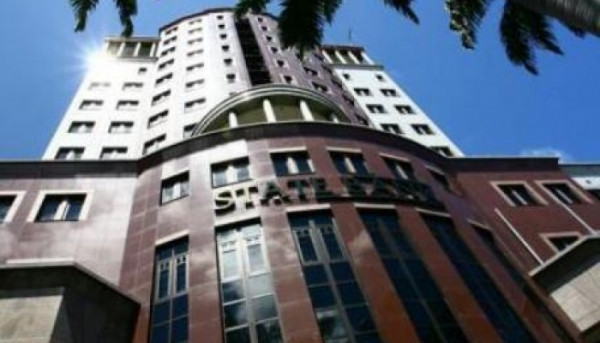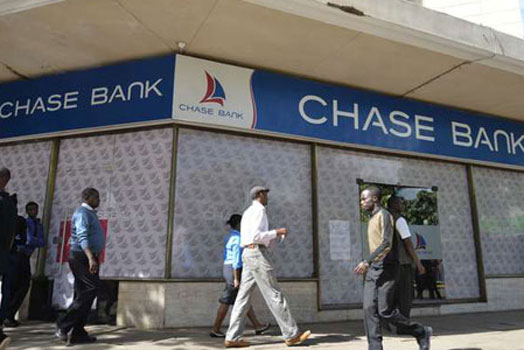 Special for Africa ExPress
Special for Africa ExPress
Michael Backbone
Nairobi, 7 November 2017
It is news this week that at long last State Bank Mauritius (SBM) staff shall be in Nairobi for conducting the due diligence on Chase Bank’s accounts, last procedural stage for them to then issue a binding offer to the Central Bank of Kenya for buying the assets.
Sofar a non-binding offer for taking over troubled Chase Bank of Kenya in receivership since April 2016 had been accepted by the Central Bank of Kenya who mandated Kenya Deposit Insurance Corporation (KDIC), a state body that protects depositors in case of a bank failure to manage Chase in this interim period.
The delay in such transaction was obliged by the uncertainty the recent Presidential rerun election had triggered, advising to prudently postpone the due diligence to this week. The due diligence is an in-depth audit of Chase’s balance sheet and assets in order to transition the non-binding offer made by SBM for Chase into a binding one.

What triggered the news is the agreement found on how and what would the new owner, State Bank of Mauritius headquartered in the Island’s capital, Port Louis, would acquire from Chase’s Balance sheet.
The State Bank of Mauritius is not new to acquisitions in Kenya, since it bought in early 2017 for a nominal 100Shillings (less than 1US$) the full ownership of Fidelity Bank: this bank was one of those institutions that put shame on the industry for being the pinstripe-suited window on street aimed at fleecing the savings of naïve customers. In this past case, it is unlikely that depositors to Fidelity were recognized a penny for their savings into Fidelity, as this was amongst the worst examples on how liberally were banking concessions granted some time ago in Kenya to deliberate fraudsters.
With Chase the situation is somewhat different, although it is rumored that the stern and rigid attitude exercised by the Central Bank of Kenya in putting the Bank into receivership was not motivated by the “qualified opinion” of the Bank’s Auditors (Deloitte and Touche) which is in some way a formal right to dissent raised by the mandated auditor of the Institution, but rather based upon a forensic audit commissioned to KPMG South Africa, remitted in draft mode and rather unofficially in August 2016 to CBK by the experts once the Central Bank took over the control of Chase.
Such forensic was not signed as the experts did not want to subscribe the alleged findings which they found disproportioned to what really happened in Chase.
Chase has in the interim disputed its auditors on record Deloitte and hence opened another track to follow in the saga.
For memory, two elements transpired from Deloitte’s audit have so far been informally challenged by the Chase leadership, these would be illicit transfers of funds for personal benefit disguised under Islamic financing, and the second count is about loans, interest free, that have been granted to Directors of the Bank.
We know the former Managers of the Bank are preparing their formal position to such allegations disputing Deloitte’s findings.

Back to SBM, the model according to which this Mauritian Bank will acquire Chase articulates as follows:
SBM will take over as of 31st December 2017, 75% of all deposits owed to depositors. This should be in the waters of 57Bn Shillings (about ½ Bn US$). In layman terms, 75 cents US to the Dollar are being returned to depositors in time.
As of January 1st, 50% of the moved deposits will be made available: in layman terms again, 37.5 cents to the Dollar will go back to depositors as of 2018, whereas a remaining 37.5 cents to the Dollar will be made available “within” three years, without giving firm dates.
There is a little 25% that is missing to the count, but the buyer has specified that the same shall be “recovered” from the assets of the former Chase Bank Directors.
This implies that legal action shall be moved against Chase Bank Directors in order to recover the missing quarter of the funds.
If we were to be drawing conclusions on what we witnessed as of today, a few things come to mind:
First, clients of Chase Bank have been offered a pretty good (for today’s standards) recovery of their deposits; it is however daunting that customers that have put faith in a Bank that is operating in strictly regulated and audited environment should bear the brunt. Money is the most important asset for any consumer and because Banks are tightly regulated, these should be insured against alleged wrongdoings.
Second, the findings of the investigations report only one side of the matter, as never have shareholders or Directors of the Bank had the opportunity to defend themselves: the Central Bank has put a lid on the right of replies in quite an orthodox manner.
Third and finally, this is the third case of a Bank entangled in bad waters (Imperial Bank and Fidelity Bank are the two recent others): time seemingly is not a priority when defending depositors’ interest, but even less so is safeguarding their interests as these will be directly impacted for the wrongdoings others have committed.
Michael Backbone
michael.backbone@com

